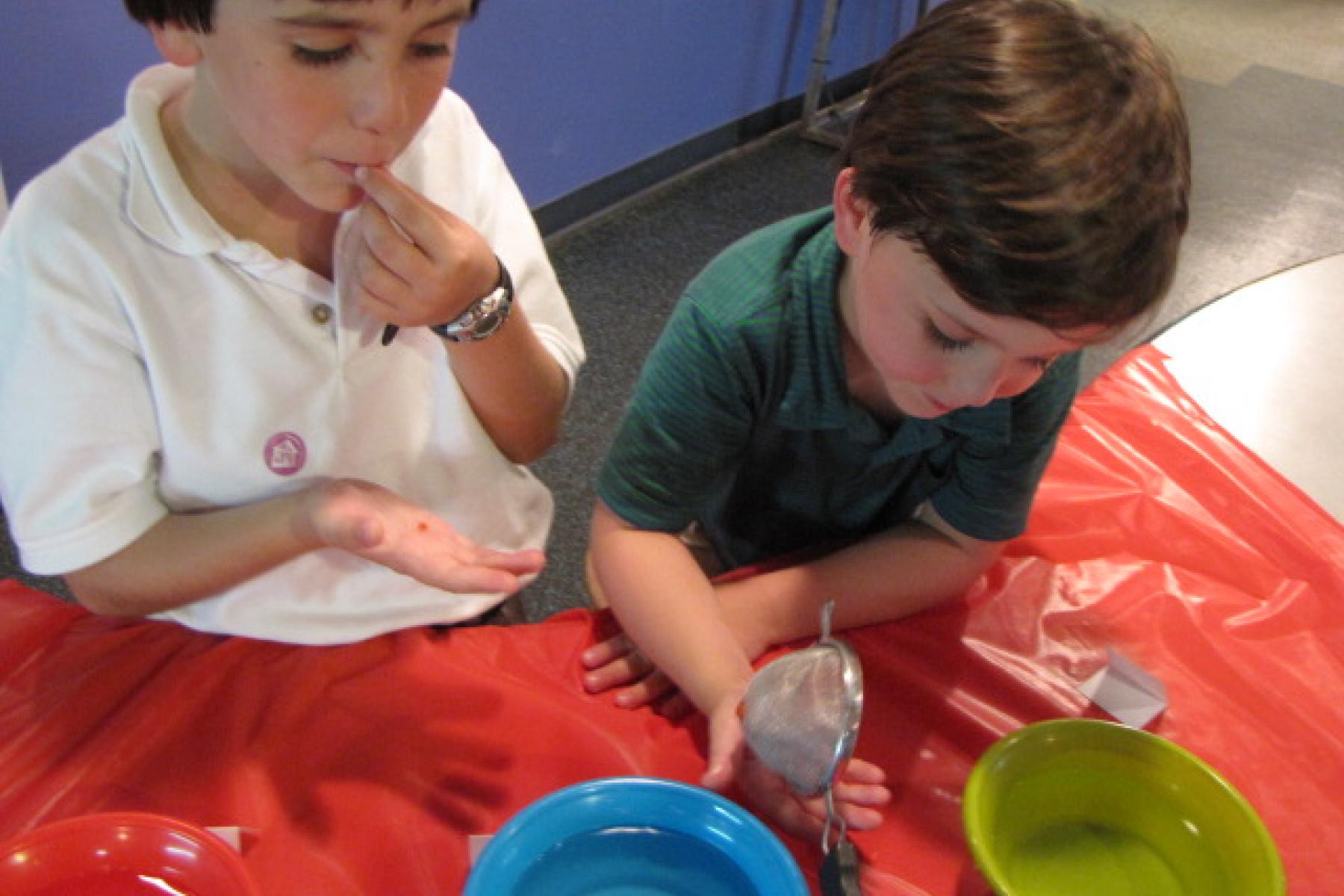DESCRIPTION
The "Sweet Self-Assembly" program focuses on the creation of macrocapsules using self-assembly techniques. Participants make edible macrocapsules using techniques similar to those being used in laboratories to make nanocapsules or "smart drugs".
DESCRIPTION
The "Sweet Self-Assembly" program focuses on the creation of macrocapsules using self-assembly techniques. Participants make edible macrocapsules using techniques similar to those being used in laboratories to make nanocapsules or "smart drugs".
TRAINING VIDEOS
OBJECTIVES
BIG IDEA
Self-assembly can be used to create new materials including nanocapsules.
LEARNING GOALS
Identify self-assembly as a process by which molecules and cells form themselves into specific, ordered structures under the right conditions.
Acknowledge that self-assembly can be used by scientists to create objects on the nano-scale.
Understand that nano is very, very small.
Discover that scientists are using self-assembly to create nanocapsules which can be less harmful than regular medicines.
NANO CONTENT MAP
Scientists and engineers have formed the interdisciplinary field of nanotechnology by investigating properties and manipulating matter at the nanoscale.
Nanoscience, nanotechnology, and nanoengineering lead to new knowledge and innovations that weren't possible before.
Nanotechnologies—and their costs, utility, risks, and benefits—are closely interconnected with society and with our values.
DOWNLOAD FILES
Credits
Children's Museum of Houston
Developed for the NISE Network with funding from the National Science Foundation under Award Numbers 0532536 and 0940143. Any opinions, findings, and conclusions or recommendations expressed in this product are those of the authors and do not necessarily reflect the views of the Foundation.
Creative Commons Attribution Non-Commercial Share Alike 3.0 United States (CC BY-NC-SA 3.0 US).
View more details

NISE Network products are developed through an iterative collaborative process that includes scientific review, peer review, and visitor evaluation in accordance with an inclusive audiences approach. Products are designed to be easily edited and adapted for different audiences under a Creative Commons Attribution Non-Commercial Share Alike license. To learn more, visit our Development Process page.





